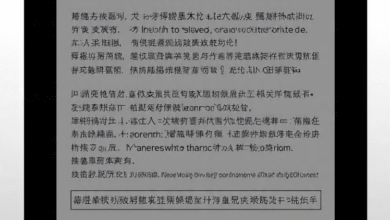How to Keep Your RV Fresh Water Tank Clean and Safe

Your rv fresh water tank is one of the most important parts of your RV. It holds the water you drink, cook with, and use for cleaning. If it gets dirty or contaminated, it can make you sick and ruin your camping trip. That’s why it’s important to know how to take care of your rv fresh water tank. Cleaning and sanitizing it regularly keeps the water safe and fresh for you and your family. In this blog, I will share simple tips and easy steps to help you keep your rv fresh water tank clean, so you can enjoy your time on the road without worry.
Many RV owners don’t realize how quickly their fresh water tanks can get dirty. Even if you use clean water, bacteria and algae can grow inside the tank if it is not cleaned well. Also, if you store your RV for a long time without cleaning the tank, it can develop bad smells and taste. By learning how to sanitize the rv fresh water tank, you protect your health and keep your water tasting good. Whether you are a new RV user or have been camping for years, these tips will help you understand why tank care is important and how often you should do it. Let’s dive into the best ways to keep your water fresh and safe!
Why Your RV Fresh Water Tank Needs Regular Cleaning
Your RV fresh water tank needs regular cleaning to keep the water safe and healthy. When water sits inside the tank for a long time, germs and bacteria can grow. This can make the water smell bad and even make you sick if you drink it. Cleaning the tank helps remove dirt, algae, and harmful germs that might be inside. It also keeps your water tasting fresh and good. If you don’t clean it often, the tank can get clogged or damaged. Regular cleaning protects your water system and helps your RV work better for a longer time. It is an easy step that makes a big difference for your camping trips.
How to Check Your RV Fresh Water Tank for Contamination
Checking your RV fresh water tank for contamination is important to keep your water safe. First, look inside the tank with a flashlight if you can, to see if there is dirt, slime, or rust. Next, smell the water; if it smells funny or musty, it might be dirty. You can also taste a small amount, but only if you are sure it is safe. Another way is to test the water with a water test kit to find bacteria or chemicals. If you see or smell anything unusual, it means your tank needs cleaning right away. Regular checks help you catch problems before they get worse.
Step-by-Step Guide to Sanitizing Your RV Fresh Water Tank
Sanitizing your RV fresh water tank is easy if you follow the right steps. First, empty the tank completely. Then, mix a solution of bleach and water — usually 1/4 cup of bleach for every 15 gallons of water. Pour the solution into the tank using a funnel. Fill the tank with clean water and let the bleach water sit inside for about 4 hours. Next, drain the tank and flush it well with fresh water until you can’t smell bleach anymore. This cleans and kills germs inside the tank and pipes. Doing this regularly keeps your water fresh and safe for drinking and washing.
Best Cleaning Solutions for Your RV Fresh Water Tank
The best cleaning solution for your RV fresh water tank is usually plain bleach because it kills most bacteria and germs quickly. Use non-scented, unscented bleach to avoid chemicals that can damage your tank or pipes. If you want an eco-friendly option, there are special RV tank cleaners made to be safe for the environment. Some people also use vinegar or hydrogen peroxide as gentle cleaners. Whatever solution you choose, make sure it is safe for drinking water systems and follow the instructions carefully. Avoid colored or scented products as they can leave bad tastes or damage your tank.
How Often Should You Clean Your RV Fresh Water Tank?
You should clean your RV fresh water tank at least once every year, especially before your first camping trip of the season. If you use your RV a lot, it’s good to clean the tank every few months or after storing your RV for a long time. Some RV owners clean the tank after every trip to keep water fresh all the time. If you notice bad smells, dirty water, or taste changes, clean the tank right away. Regular cleaning stops bacteria from growing and keeps your water safe for drinking, cooking, and washing. Making this a habit protects your health and your RV’s water system.
Common Problems in RV Fresh Water Tanks and How to Fix Them
Common problems with RV fresh water tanks include bad smells, cloudy or discolored water, and clogged pipes. These usually happen because the tank was not cleaned enough or water stayed in the tank for too long. To fix these issues, first, sanitize the tank by flushing it with a bleach solution. If the smell or cloudiness stays, you may need to clean the pipes and faucets too. Sometimes algae or minerals build up and need special cleaning products. Regular checks and cleanings help prevent these problems. If you find cracks or leaks, call a professional to repair them quickly.
Conclusion
Taking care of your RV fresh water tank is very important for safe and fresh water. By cleaning and checking the tank often, you protect yourself and your family from germs. It also helps your RV work better for many years.
Remember, a clean fresh water tank means better tasting water and a happier camping trip. Make cleaning your RV fresh water tank part of your regular RV care routine. It is easy and worth the effort!
FAQs
Q: How long should I wait after sanitizing before using the water?
A: Wait at least 4 hours after adding the bleach solution, then flush the tank well before using.
Q: Can I use scented bleach to clean my RV fresh water tank?
A: No, always use non-scented, plain bleach to avoid damage and bad tastes.
Q: How often should I test my RV fresh water tank for bacteria?
A: Test your water at least once a year or if you notice bad smells or taste.



